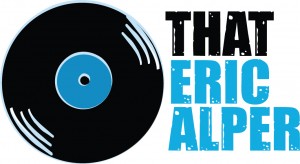You know Led Zeppelin II. You’ve cranked up “Whole Lotta Love” in your car, played air guitar to “Heartbreaker,” and whispered “Ramble On” lyrics like a secret only true fans understand. But do you really know this album? The 1969 masterpiece didn’t just set the standard for hard rock—it changed music history forever. From groundbreaking recording techniques to a certain Tolkien connection, here are five things you probably didn’t know about Led Zeppelin II.
1. It Was Recorded in Some of the Most Unlikely Places
Imagine laying down a rock and roll classic in a makeshift studio with no proper headphones. That’s exactly what Led Zeppelin did while recording Led Zeppelin II. Unlike most albums, which are recorded in one or two studios, this one was pieced together in over a dozen different locations across the UK and the US—some barely equipped to handle a band of Zeppelin’s power. Jimmy Page and Eddie Kramer had to work with whatever was available, sometimes mixing tracks on the fly while the band was on tour. The result? An album that captures the raw, urgent energy of their live performances like no other.
2. The “Whole Lotta Love” Mix Was Pure Studio Magic
One of the most iconic moments in Led Zeppelin II is the trippy middle section of “Whole Lotta Love,” where Robert Plant’s vocals swirl, echo, and float through the speakers like a rock and roll fever dream. But here’s the wild part: it wasn’t planned. Engineer Eddie Kramer and Jimmy Page crafted that psychedelic section by randomly twisting knobs, adding effects in real time, and experimenting with stereo panning. It was all done manually, live in the studio, with no computers or automation—just pure instinct and sonic wizardry.
3. J.R.R. Tolkien Inspired “Ramble On”
Led Zeppelin had a thing for The Lord of the Rings, and nowhere is that more obvious than in “Ramble On.” Robert Plant’s lyrics reference Mordor, Gollum, and “the evil one” in a song about adventure, longing, and wandering souls. Plant was a huge Tolkien fan, and traces of Middle-earth would continue to pop up in Zeppelin’s music, from “The Battle of Evermore” to “Misty Mountain Hop.” Fun fact: Despite being one of Zeppelin’s most beloved songs, “Ramble On” was never performed live by the full band until their 2007 reunion show at the Ahmet Ertegun Tribute Concert.
4. “Heartbreaker” Changed the Way Guitar Solos Were Played
Jimmy Page’s unaccompanied solo in “Heartbreaker” is one of the most influential moments in rock guitar history. Recorded separately from the rest of the song, the 46-second solo was completely spontaneous—Page just plugged in and let loose. It became a blueprint for future guitarists, inspiring everyone from Eddie Van Halen to Slash. In fact, Van Halen once said that the “Heartbreaker” solo directly influenced his famous “Eruption” tapping technique. The next time you hear that wild, unchained burst of guitar, know that it paved the way for generations of shredders to come.
5. The Album Cover Is a Remix of a World War I Photograph
The Led Zeppelin II album cover looks like a surrealist rock and roll dream, but it actually started as a photograph of a World War I German Air Force division. The original image featured the famed Flying Circus squadron led by the Red Baron, but artist David Juniper modified it by replacing some of the pilots’ faces with those of the Zeppelin members. He even snuck in a few unexpected additions—like French actress Delphine Seyrig from the 1969 film Mr. Freedom. A Zeppelin album cover inspired by a leftist anti-war satire? Now that’s rock and roll.
Fifty-five years after its release, Led Zeppelin II still stands as a defining moment in rock history, a declaration of the band’s sonic identity, fusing blues, hard rock, and psychedelia into an unstoppable force. With its raw energy, studio innovations, and unforgettable riffs, it set the template for countless bands to follow. Whether you’re revisiting it for the hundredth time or dropping the needle on it for the first, Led Zeppelin II remains, quite simply, essential.







